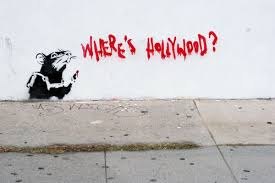
This project is basically centered around creating an "illuminated letter" or "drop cap." The Illuminated Letter was something used frequently in Middle Age texts. Today, the drop cap is often seen in magazines or websites. The project involved mimicking the design of a favorite artist (or three) and using their style to create an interesting and legible letter. How can one express an artist's characteristics using a canvas the size of a letter? A 3 x 3 " letter no less.
Overview
The challenge of creating something similar to an artist you admire is complex: You must balance your own style with theirs, making something original that is at the same time yours and theirs. I found that the challenge definitely depended on the artist, because some artists are more difficult to emulate. I found that my high school doodles were pretty similar in feeling to H. R. Giger's work, so his portion was the most easy. Steadman, was probably next easiest, because his sketchy quality, while not like mine, is something I can easily appreciate and understand. The most difficult for me was Banksy, because I personally I have never made a spray paint stencil, found a spot, and spray painted it onto a wall. So, it involved more imagination and exploration.
Progress
Below, you will see my progress that lead to the final design. Some of the progress obviously ends quickly, but other times, innovation leads to success. I believe that the choices behind the final designs were they best possible but the entire process allowed for a thorough exploration of the concept. So that, while a concept might not have been chosen, it was still important in itself.

















